Country guides

Things to do in Turkey
Turkey is a country where the past and present intertwine to offer an unforgettable blend of history, natural beauty and warm hospitality. From the ancient ruins of Ephesus to the surreal white terraces of Pamukkale, the country is a treasure trove of experiences waiting to be discovered.
In Istanbul, the echoes of history are alive in its iconic mosques, palaces and bustling bazaars. The Mediterranean coast entices with golden beaches and crystal-clear waters, while the otherworldly landscapes of Cappadocia invite travellers to soar above in a hot air balloon, taking in views of its unique rock formations. Turkey's rich heritage also comes alive in the ancient city of Troy and the rock-hewn churches of Göreme.
Beyond its history, Turkey offers a culinary adventure with dishes that tantalise the senses, from succulent kebabs to irresistible baklava. Every corner of this diverse country offers something extraordinary, whether visitors are seeking relaxation, exploration or a taste of something new. Turkey promises not just a holiday, but a journey through time and culture, leaving travellers with memories that last a lifetime.
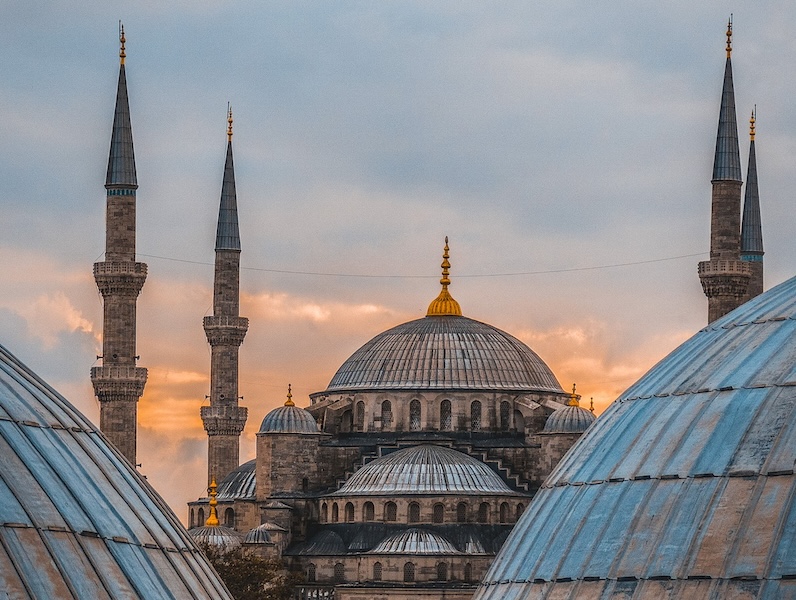
Blue Mosque (Sultan Ahmet Camii)
Commonly known as the Blue Mosque, the Sultan Ahmet Camii is one of the most striking structures on the Istanbul skyline. Constructed as an Islamic rival to the Hagia Sophia in 160…
Blue Mosque (Sultan Ahmet Camii)
Commonly known as the Blue Mosque, the Sultan Ahmet Camii is one of the most striking structures on the Istanbul skyline. Constructed as an Islamic rival to the Hagia Sophia in 1609, its tiers of magnificent domes and six graceful minarets are immediately distinguishable. It's one of the finest examples of Ottoman architecture and is still used by hundreds of worshippers. The interior is splendidly decorated with thousands of blue and white Iznik tiles embellished with traditional Ottoman flower patterns, and it's this special feature that gives the mosque its name. Its design of successively descending smaller domes, soaring columns, and 260 stained glass windows leaves a lasting impression of graceful accord and open space. At the back of the mosque is a Carpet and Kilim Museum exhibiting antiques from all over Turkey.
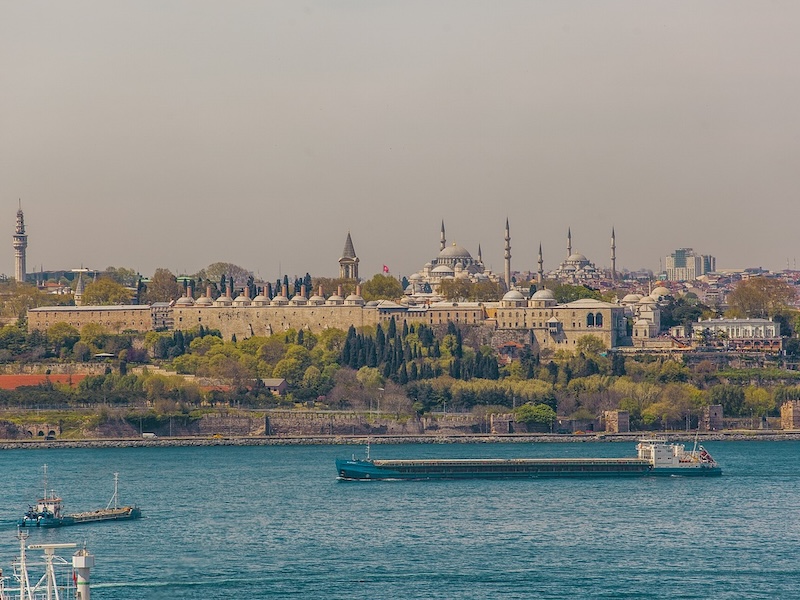
Topkapi Palace Museum
Built by Mehmet the Conqueror as a sultan's palace, the Topkapi Sarayi consists of a collection of buildings arranged around several interconnecting courtyards. Situated on one of …
Topkapi Palace Museum
Built by Mehmet the Conqueror as a sultan's palace, the Topkapi Sarayi consists of a collection of buildings arranged around several interconnecting courtyards. Situated on one of the seven hills of Istanbul with uninterrupted views over the Bosphorus River and the Golden Horn, it was the seat of the Ottoman Empire for almost four centuries. Home to nearly 3000 people, it served as a royal residence, harem, administration building, and military barracks. One of the most popular sections is the harem, once the quarters of about 300 women who were the sultans' wives and concubines, and their children. Visitors can view the apartments, halls, and terraces of the harem, and see the lavish royal bedchamber and imperial hall. No expense was spared in decorating the palace and its exquisitely designed rooms, intricately detailed fountains, and splendid treasury housing one of the greatest collections of treasure in the world. It affords insight into the opulent lifestyle of the sultans of the Ottoman Empire.
Website www.muze.gen.tr/muze-detay/topkapi
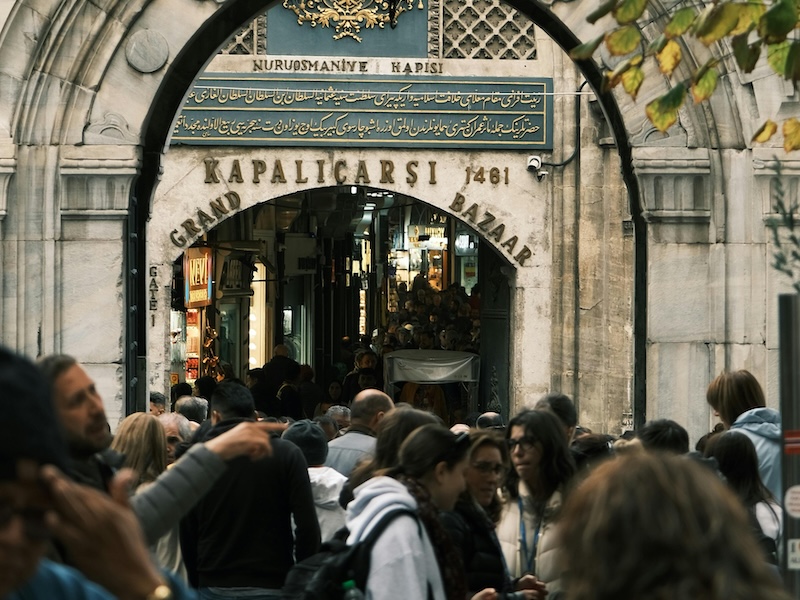
Grand Bazaar (Kapalicarsi)
The oldest and biggest enclosed bazaar in the world, Kapalicarsi is one of the most enticing and mesmerising attractions in Istanbul. Also known as the Grand Bazaar, it consists of…
Grand Bazaar (Kapalicarsi)
The oldest and biggest enclosed bazaar in the world, Kapalicarsi is one of the most enticing and mesmerising attractions in Istanbul. Also known as the Grand Bazaar, it consists of a vast labyrinth of twisting streets crammed with more than 4,000 shops, teahouses, Turkish baths, mosques, storehouses, and fountains. It's a fascinating experience to wander around the alleyways, looking at and bargaining for an array of goods and services. Here visitors can find almost anything, from meerschaum pipes, carpets, jewellery, and Turkish delight, to textiles, spices, clothing, and hand-painted ceramics. Protracted bargaining over a cup of tea is an important institution. Built during the rule of Sultan Mehmet the Conqueror in 1461, the bazaar grew by covering an increasingly large area of shops and streets with roofs, arches, and domes. Eventually it became the centre of trading during the Ottoman Empire. Caravans of silk traders traditionally stayed here and rested their camels while selling their merchandise, and many of these caravanserais still exist as storehouses today.
Website www.kapalicarsi.com.tr
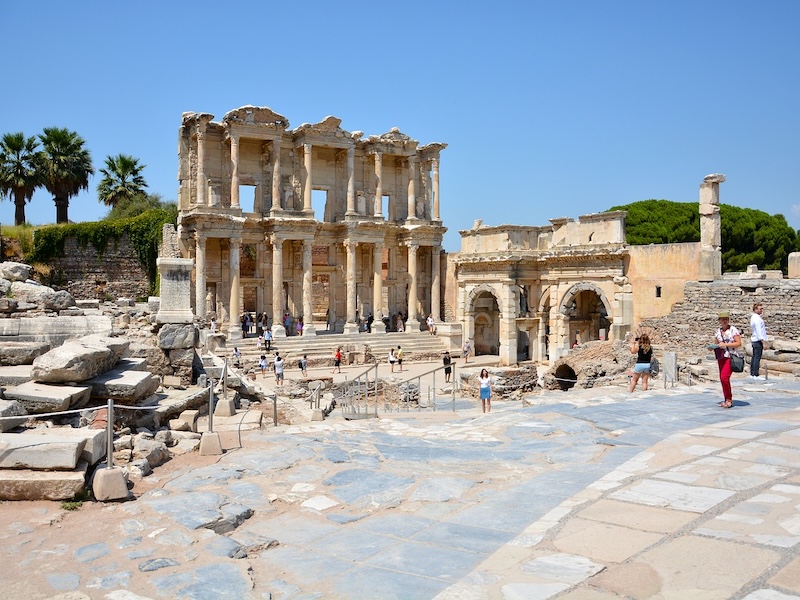
Ephesus
Ephesus is the biggest and best-preserved ancient city in Turkey and is one of the world's most spectacular historical sites. The city and its harbour were established on the mouth…
Ephesus
Ephesus is the biggest and best-preserved ancient city in Turkey and is one of the world's most spectacular historical sites. The city and its harbour were established on the mouth of the Cayster River and, in the 2nd century BC, became the most important port and commercial trading centre in Anatolia. Alexander the Great ruled over it during the Hellenistic period and it was once capital of Roman Asia under Augustus in 133 BC. Ephesus declined during the Byzantine Era and by 527 AD it was deserted. Ephesus is also important as the early seat of Christianity, visited by Saint Paul, whose letters to the Ephesians are recorded in the New Testament. Guides are available and can offer a rich insight into the history and architecture of the ruins. Chariot-worn streets contain amphitheatres, murals, and mosaics, as well as baths, fountains, and columns. Highlights include the enormous Library of Celsus, the Temple of Hadrian, and the Grand Theatre where Paul preached to the Ephesians. The city was originally dedicated to the goddess Artemis and her once-magnificent temple is considered one of the Seven Wonders of the Ancient World.
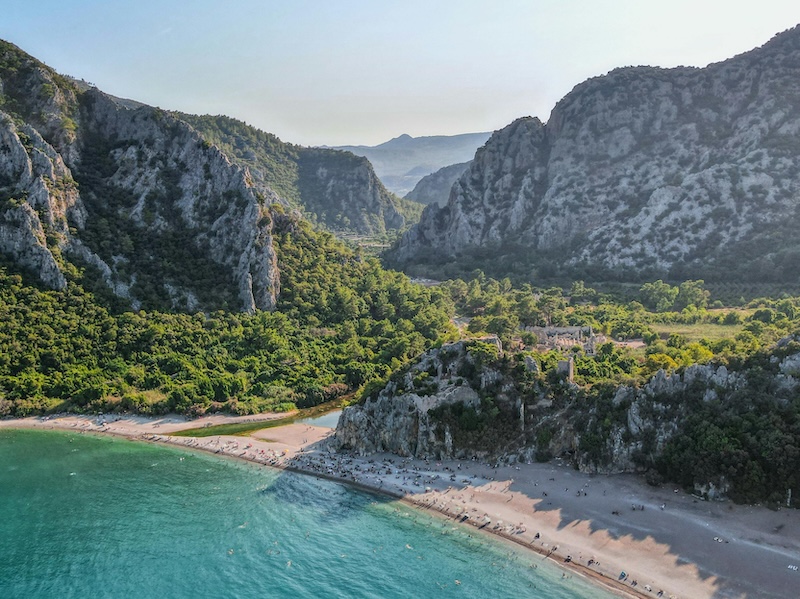
Olympos and the Fires of the Chimaera
The ancient site of Olympos dates back to Hellenistic times when it was an important Lycian city, becoming famous as a place for worship honouring Hephaestos, the God of Fire. Loca…
Olympos and the Fires of the Chimaera
The ancient site of Olympos dates back to Hellenistic times when it was an important Lycian city, becoming famous as a place for worship honouring Hephaestos, the God of Fire. Located on a beautiful sandy bay, the ruins are spread out on either side of the Ulupinar River and include a Byzantine bathhouse with mosaic floors, a marble temple entrance, a theatre, and some excavated tombs. The shoreline is also a major protected nesting site for sea turtles. On the rocky slopes above the ancient city are a series of eternal flames issuing from cracks in the rock, caused by the combustion of natural gas seeping out of the mountain. It's possible to extinguish them briefly, but they will always reignite and are most impressive in the dark when at their most visible. The fire that comes out of the ground is said to be coming from the mouth of the Chimera, a mythical fire-breathing monster with the head of a lion, the body of a goat, and a snake's tail, who was slain by the Lydian hero, Bellerophon, on his winged horse Pegasus.
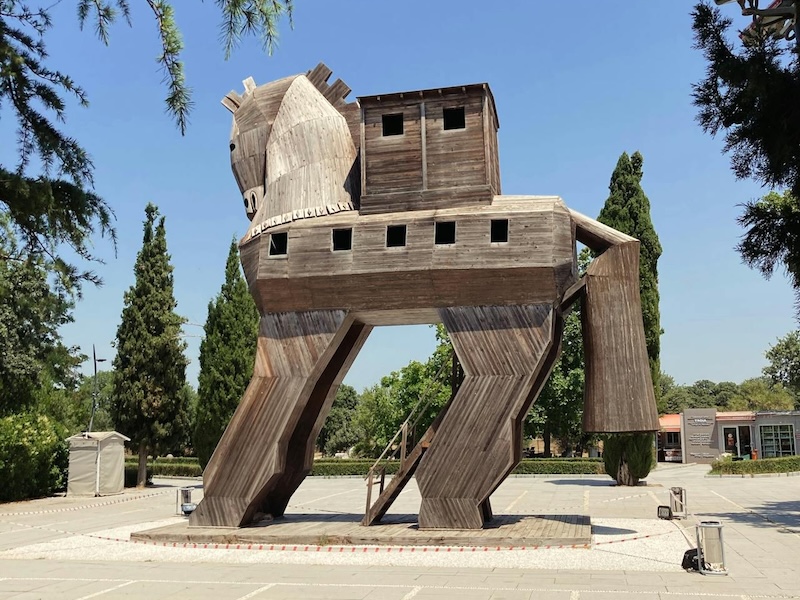
Ancient Troy
For about 3,000 years the legendary battle of Troy pervaded Western culture. The story, told by Homer in the Iliad, was regarded as just a myth, until the ruins of the city were fo…
Ancient Troy
For about 3,000 years the legendary battle of Troy pervaded Western culture. The story, told by Homer in the Iliad, was regarded as just a myth, until the ruins of the city were found at Hisarlik, in western Turkey, in the mid-19th century. Today the romantic story draws tourists and archaeologists alike to the site, where not a great deal remains to be seen beyond the ancient walls and a replica of the famed Trojan horse that enabled the final conquering of the city by the ancient Greeks. The setting is also spectacular, offering views of the Dardanelles and the hills of Gallipoli.

Goreme
The small town of Goreme is situated in the middle of the Valley of Fairy Chimneys in the historical region of Cappadocia. It's surrounded by the eerie shapes and fantastic rock fo…
Goreme
The small town of Goreme is situated in the middle of the Valley of Fairy Chimneys in the historical region of Cappadocia. It's surrounded by the eerie shapes and fantastic rock formations that have made the region famous. It's one of the few remaining villages where fairy chimneys and rock-hewn houses are still inhabited, and several restaurants and cafes are carved into the rock. Its biggest attraction is the Goreme Open-Air Museum, which has over 30 beautifully frescoed Byzantine rock churches. The town makes an excellent base from which to explore the surrounding rock formations, villages and vineyards. For shoppers, carpets and kilims are plentiful.


